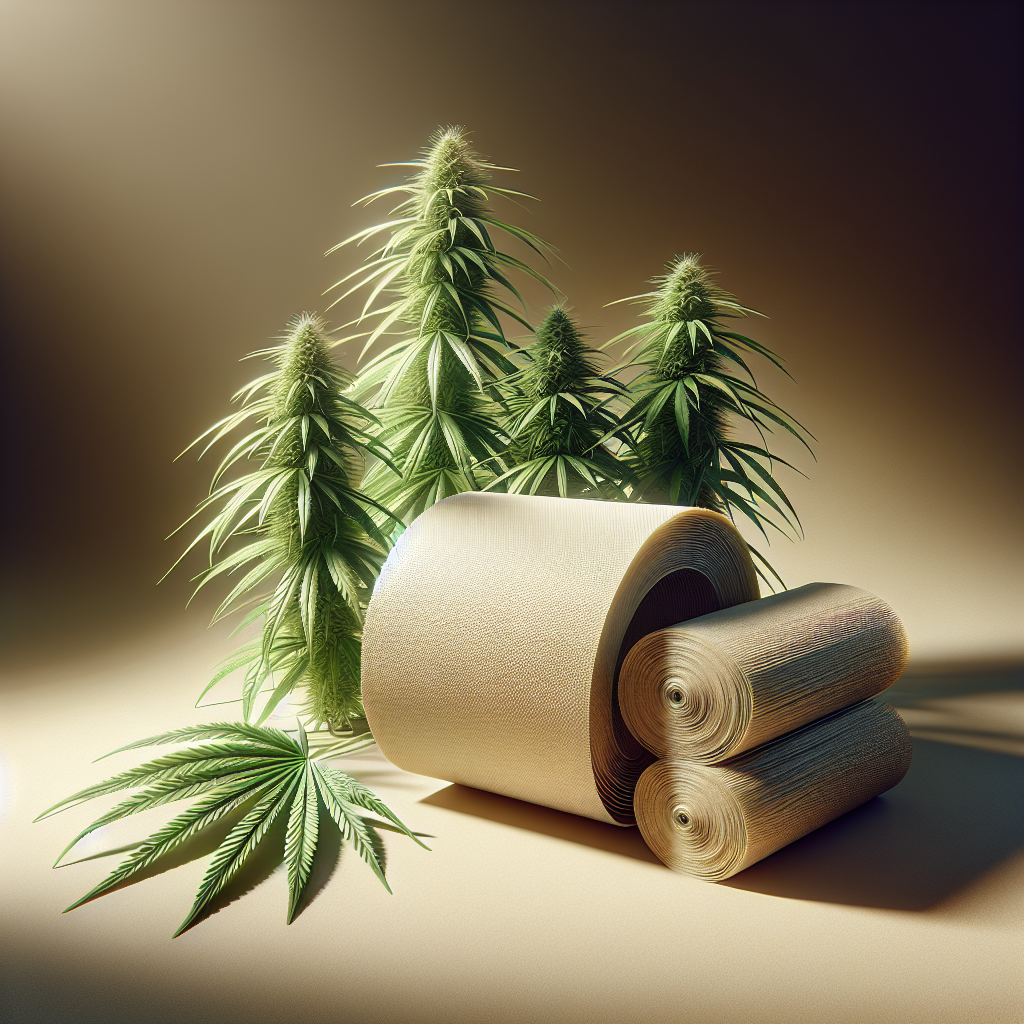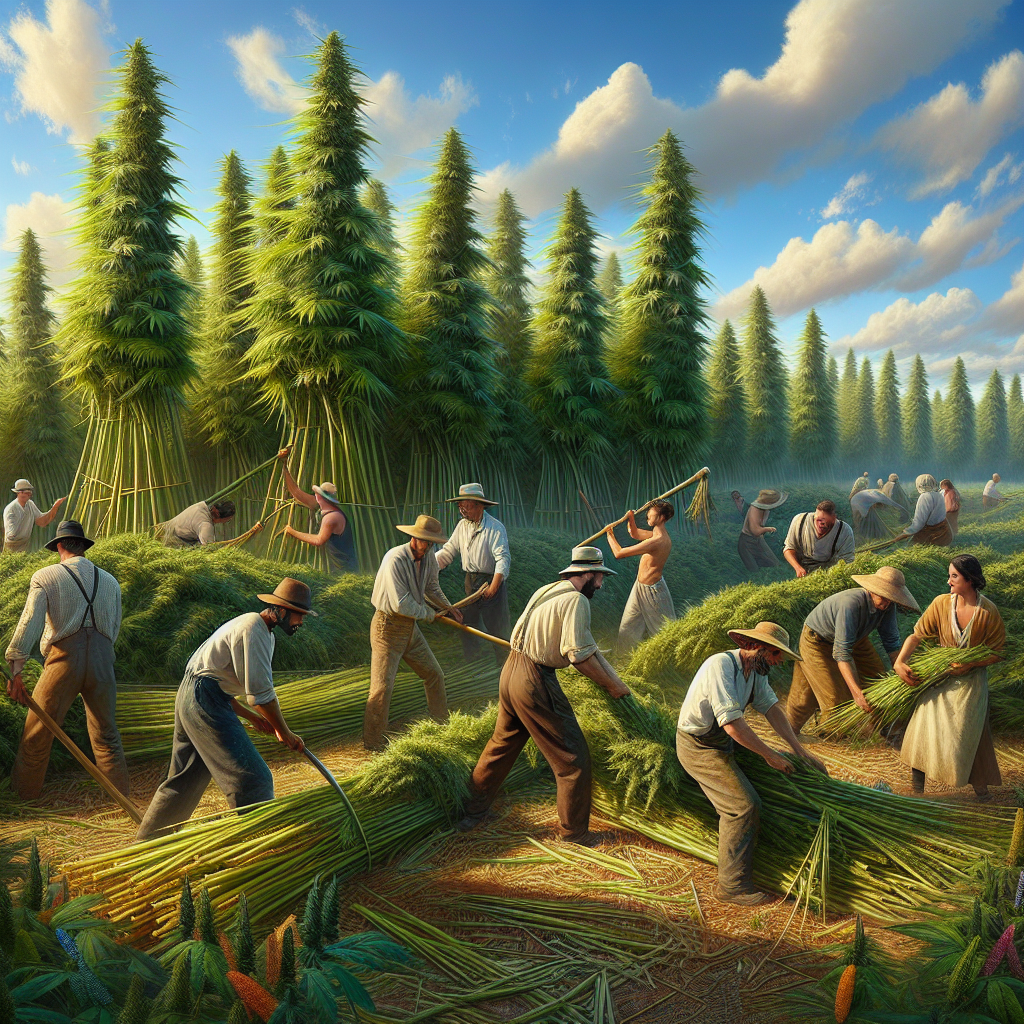Hemp paper has a rich history that dates back to ancient China, where it was first developed over 2,000 years ago. Today, hemp paper is celebrated for its sustainability and durability. Derived from the fibers of the hemp plant, this eco-friendly alternative to traditional wood-based paper is gaining popularity among environmentally conscious consumers and businesses alike.
Unlike conventional paper, which relies heavily on deforestation, hemp paper production involves the use of hemp stalks. These stalks are known for their rapid growth cycle, making hemp a highly renewable resource. Additionally, hemp cultivation requires fewer pesticides and less water compared to traditional wood sources, further enhancing its environmental benefits.
Beyond its ecological advantages, hemp paper is also prized for its superior quality. It is more resistant to yellowing and deterioration, ensuring that documents and art prints made from hemp paper stand the test of time. With such remarkable attributes, it’s no wonder that hemp paper is making a comeback in various industries.
Curious about the potential of hemp in other products? At Smoke Show Labs, we specialize in Delta-8 (hemp) vape manufacturing, co-packing, and white labeling. Let’s start your Delta-8 brand and explore the endless possibilities of hemp together!
Harvesting and Processing Hemp
The journey of hemp paper begins with the harvesting of hemp plants. Typically, hemp is ready for harvest about 70 to 90 days after planting. Farmers carefully monitor the plants to ensure they are cut at the optimal time, which maximizes fiber quality. The harvested hemp stalks are then left to dry in the field for several days, reducing moisture content and making them easier to process.
Once dried, the hemp stalks are transported to a processing facility, where they undergo a process known as retting. Retting is the biological or chemical treatment that separates the hemp fibers from the woody core, known as the hurd. This step is crucial, as it prepares the fibers for the next stages of paper production. There are several retting methods, including field retting, water retting, and enzymatic retting, each with its own advantages and disadvantages.
After retting, the separated fibers are further refined through a process called decortication. During decortication, the fibers are mechanically separated from the hurd using specialized equipment. This step ensures that only the best quality fibers are used in the production of hemp paper. The refined fibers are then cleaned to remove any remaining impurities, resulting in a high-quality raw material ready for the next phase of paper-making.
Understanding the intricate steps involved in harvesting and processing hemp highlights the meticulous care required to produce top-tier hemp paper. Each phase, from cultivation to decortication, plays a vital role in ensuring the final product meets the highest standards of quality and sustainability.
Pulping the Hemp Fibers

Once the hemp fibers have been harvested, retted, and decorticated, the next critical step in the production of hemp paper is pulping. Pulping is the process of breaking down the hemp fibers into a slurry, which serves as the basis for paper production. There are several methods of pulping, each with its unique advantages depending on the desired quality and characteristics of the final paper product.
Mechanical pulping involves physically grinding the hemp fibers to produce a fibrous pulp. This method is efficient and cost-effective but may result in a coarser paper with lower strength. On the other hand, chemical pulping uses chemical solutions to break down the lignin and other components that bind the fibers together. This process yields a smoother and stronger paper, ideal for higher-quality applications.
An increasingly popular method is semi-chemical pulping, which combines both mechanical and chemical processes. This hybrid approach balances efficiency and quality, producing pulp that retains the strength of chemical pulping while benefiting from the cost advantages of mechanical pulping.
Regardless of the method chosen, the pulping process begins by placing the hemp fibers into a pulper, where they are mixed with water and the necessary chemicals (if applicable). The mixture is then agitated to break down the fibers into a homogenous slurry. This slurry is screened to remove any remaining impurities and ensure a uniform consistency. The result is a hemp pulp that is ready to be transformed into paper sheets.
Effective pulping is essential for achieving the desired properties in the final hemp paper product. By carefully selecting and executing the appropriate pulping method, manufacturers can produce hemp paper that meets specific quality standards and application requirements.
Sheet Formation Process

After the hemp fibers have been successfully pulped, the next phase in the papermaking journey is the sheet formation process. This step is crucial as it transforms the hemp pulp slurry into thin, uniform sheets that will eventually become the final paper product.
The process begins with the slurry being diluted further to ensure it has the right consistency for sheet formation. This diluted pulp is then poured onto a moving screen or mold, a technique reminiscent of traditional papermaking methods. The screen allows water to drain away, leaving a mat of interwoven hemp fibers.
For larger-scale production, modern papermaking machines are used. These machines have a continuous moving belt, known as the Fourdrinier wire, where the pulp is distributed evenly. As the slurry moves along the belt, water is drained through the mesh, and the fibers begin to bond together, forming a continuous sheet of wet paper.
To remove excess water, the wet sheet passes through a series of pressing rollers. These rollers apply pressure to squeeze out additional moisture, making the sheet denser and more compact. The pressing stage is vital for enhancing the paper’s strength and uniformity.
Following pressing, the sheet enters the drying section. Here, the paper is carefully dried using heated cylinders or air dryers to evaporate the remaining water. Proper drying is essential to prevent warping and to achieve the desired thickness and texture of the paper.
Once dried, the hemp paper sheet is wound onto reels for further processing or cut into specific sizes as required. The sheet formation process is a blend of art and science, ensuring that each sheet of hemp paper meets the rigorous standards for quality and performance.
Drying and Finishing Paper

Once the hemp paper sheets have been formed, the next critical phase is the drying and finishing process. This stage is essential for achieving the desired properties and quality of the final paper product.
Initially, the wet paper sheets enter the drying section, where they are passed over a series of heated cylinders. These cylinders gradually evaporate the remaining water content, ensuring the sheets dry evenly. Proper drying is crucial to prevent defects such as warping or uneven texture, which could compromise the paper’s usability.
In some cases, air dryers may also be employed. These utilize hot air to accelerate the drying process, offering a more uniform and controlled drying environment. The combination of cylinder and air drying methods ensures that the hemp paper achieves the optimal balance of moisture content, strength, and flexibility.
Once dried, the paper undergoes a series of finishing treatments. This may include calendering, where the paper is passed through rollers to enhance its smoothness and gloss. Calendering can also improve the paper’s thickness uniformity, making it more suitable for various applications, such as printing or writing.
Additional finishing processes might involve surface treatments like sizing, which adds a thin layer of protective coating to the paper. This coating can enhance the paper’s resistance to ink absorption and improve its overall durability. Some hemp papers may also undergo special treatments to impart specific qualities, such as water resistance or increased strength.
Finally, the finished hemp paper is cut into sheets or rolls of the desired dimensions. The product is then ready for packaging and distribution. The drying and finishing stages are instrumental in transforming the raw hemp pulp into a high-quality paper that meets industry standards and consumer expectations.
Advantages and Uses of Hemp Paper

The advantages of hemp paper make it a compelling alternative to traditional wood-based paper. One of the most significant benefits is its environmental sustainability. Hemp grows rapidly, maturing in just a few months, unlike trees, which take years to reach harvestable size. This fast growth rate means that hemp can be cultivated and harvested multiple times a year, reducing the strain on forests and promoting a more sustainable paper production cycle.
Hemp paper is also highly durable. The fibers in hemp are longer and stronger than those in wood, resulting in a paper that is more resistant to tearing and yellowing over time. This makes it ideal for archival purposes, where the longevity of the paper is crucial.
Another notable advantage is that hemp requires fewer chemicals during the pulping process. This means that the production of hemp paper generates less pollution and is less harmful to the environment. The reduced need for bleaching agents also results in a paper that is less likely to cause skin irritation, making it suitable for a wide range of applications.
Hemp paper has diverse uses across various industries. It is commonly used for printing and writing paper, offering a high-quality, eco-friendly option for books, notebooks, and stationery. Due to its durability and archival qualities, hemp paper is also favored for important documents and currency.
In the packaging industry, hemp paper is valued for its strength and resistance to wear and tear. It can be used for making sturdy boxes, bags, and other packaging materials that need to withstand rough handling. Additionally, hemp paper is used in the production of specialty items like art paper, where its unique texture and appearance are highly prized.
With its myriad benefits and versatile applications, hemp paper stands out as a robust, eco-friendly alternative to traditional paper. As more companies and consumers seek sustainable options, the demand for hemp paper is expected to grow.
Ready to explore the potential of hemp in other products? Let’s start your Delta-8 brand with Smoke Show Labs!

